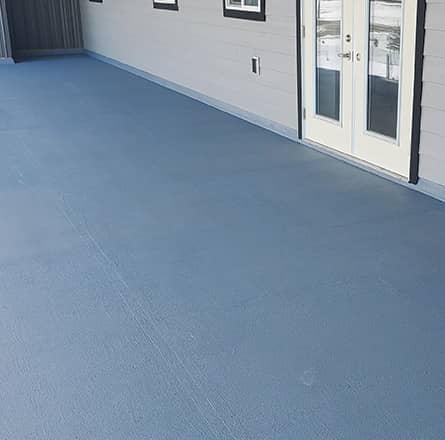DIYers: How Long Does it Take for Liquid Rubber to Dry?

So you’re almost prepped to add a protective coating of liquid rubber to your deck. You’ve got all the tools in place, and you probably have already taken a look at our handy guide: How to Waterproof a Plywood Deck or Balcony. But there’s one thing left to wonder: How long does it take for liquid rubber to dry?
Let’s start with the basics. Read on to learn more.
What is Liquid Rubber & How Does it Work?
Liquid Rubber, such as the deck coating options offered at Shop Liquid Rubber, is a polyurethane multipurpose liquid rubber coating that drys quickly, forming a waterproof, rubberized membrane that beefs up the look and feel of your decking while adding layers of protection to it, so you can enjoy it for years to come.
As a matter of fact, liquid rubber isn’t all that new. The first uses of it can be traced back as far as 150-plus years ago, when bitumen was mixed with rag and straw (and a few other components) to create a waterproof solution for small buildings, like huts and houses.
Fast forward to the late 1950s, and the advent of acrylics and polyester compounds helped to improve this desirable waterproof coating. It wouldn’t be until the 1980s, however, that polyurethane was invented, changing the way we waterproof everything forever.
Practical Applications of Liquid Rubber
Liquid rubber is used today for a variety of applications. The best part is that it can be applied to most types of non-oil based surfaces. That’s right, you can apply it to things like concrete, wood, PVC piping, a variety of different types of metals, and so much more.
In fact, liquid rubber is so multifarious that it can incredibly bond to nearly any type of surface. As the application dries -- or cures -- it creates a rubberized membrane that is both durable and flexible, as well as being waterproof and weather resilient.
What’s more, liquid rubber is considered to be an elastomeric type compound, which means it will go back to the original shape after being stretched or condensed (from heat or cold). Finally, it’s a seamless application, meaning that you can apply it to most types of places, including curvatures, seams, angles and more.
How Long Does Liquid Rubber Last?
What’s great about this compound is that it’s durable and long-lasting. Of course, everyone has a different and unique situation that they’re in, so the durability can and will vary. Notwithstanding various weather patterns, wind and geometric location, though, the average application of liquid rubber can last as long as 10 years.
Over time, exposure to the sun’s UV rays, winter and summer weather, rain and snow can corrode the layers, ultimately making it necessary to recoat protected surfaces. The best way to know if you need to redo your liquid rubber coating is by looking at the surface. Any signs of corrosion or exposure to the surface that’s been coated is a sign that it's time for a recoat.
Is Liquid Rubber Nontoxic?
The best news is that liquid rubber is nontoxic. Unlike so many other types of compounds, paints, primers and sealants that you can consider, liquid rubber is indeed safe to use. You won’t require a special breathing mask, nor is protective clothing necessary; just wear old clothes you don’t mind getting dirty or stained alongside a pair of durable gloves.
Even skin exposure isn’t toxic, and you can use something as simple as olive oil or general cooking oil to remove it. Spraying the compound for application purposes isn’t toxic, either, but you will want to wear a breather to ensure that you don't inhale any of the fine particles, and other dust and debris, while applying each coating.
Waterproofing Surfaces with Liquid Rubber
It’s relatively straightforward to waterproof surfaces with liquid rubber. In a nutshell, you’ll want to make sure the surface is clean first by using Liquid Rubber Deck & Patio Cleaner. This will remove dirt, oil and other debris, so that the compound can fully bond to the surface.
After that, simply apply the compound using a spray gun, roller or brush in even coats. Some surfaces will require an application of epoxy primer, This helps by increasing the bond strength and helps to prevent blistering.
How Long Does it Take Liquid Rubber to Dry?
Liquid rubber can take 4-8 hours to dry between coats. This isn’t an approximate time, however, and weather conditions can affect curing times. As a general rule of thumb, allow for at least 5-7 days after the final application of the compound to move back any outdoor furnishings.
Need Even More Tips?
Have a look at a few other related guides (below) we’ve created to help you out on your journey of DIY home improvement.
